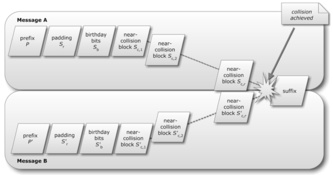
urbansheep@gmail.com
Crypto breakthrough shows Flame was designed by world-class scientists | Ars Technica - http://arstechnica.com/securit...

|
9 июня 2012 в 15:46 с Bookmarklet
Starepolsky smok
mellow vibes
cyberpunk soul
луну придётся засолить
godegisel
рептильный дом
Глеб Арестов
радио морских снегоходов
alf
Vlad Rafeev
mindszenty
“According to Stevens and de Weger, the collision attack was unlike any that cryptographers have seen before. They arrived at that conclusion after using a custom-designed forensic tool to analyze Flame components. ¶ "More interestingly, the results have shown that not our published chosen-prefix collision attack was used, but an entirely new and unknown variant," Stevens wrote in a statement distributed on Thursday. "This has led to our conclusion that the design of Flame is partly based on world-class cryptanalysis. Further research will be conducted to reconstruct the entire chosen-prefix collision attack devised for Flame." ¶ The analysis reinforces theories that researchers from Kaspersky Lab, CrySyS Lab, and Symantec published almost two weeks ago. Namely, Flame could only have been developed with the backing of a wealthy nation-state. Stevens' and de Weger's conclusion means that, in addition to a team of engineers who developed a global malware platform that escaped detection for at least two years, Flame also required world-class cryptographers who have broken new ground in their field.” - × × ×
LinkedIn - × × ×
Last.fm - × × ×
Riot Games/League of Legends - × × ×
© 2015 FriendFeed (and Clio archiver)